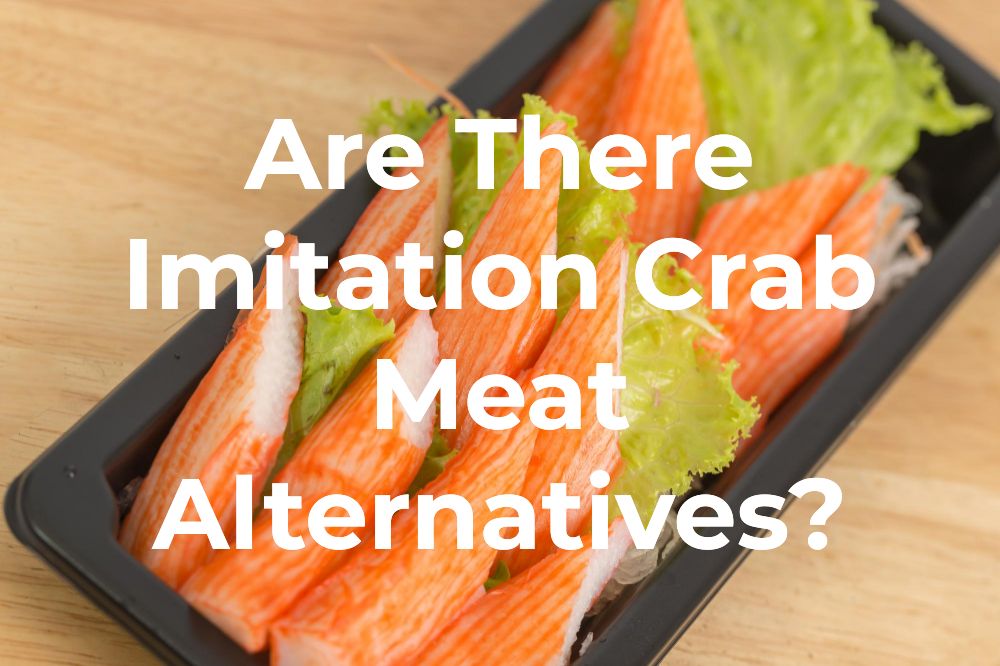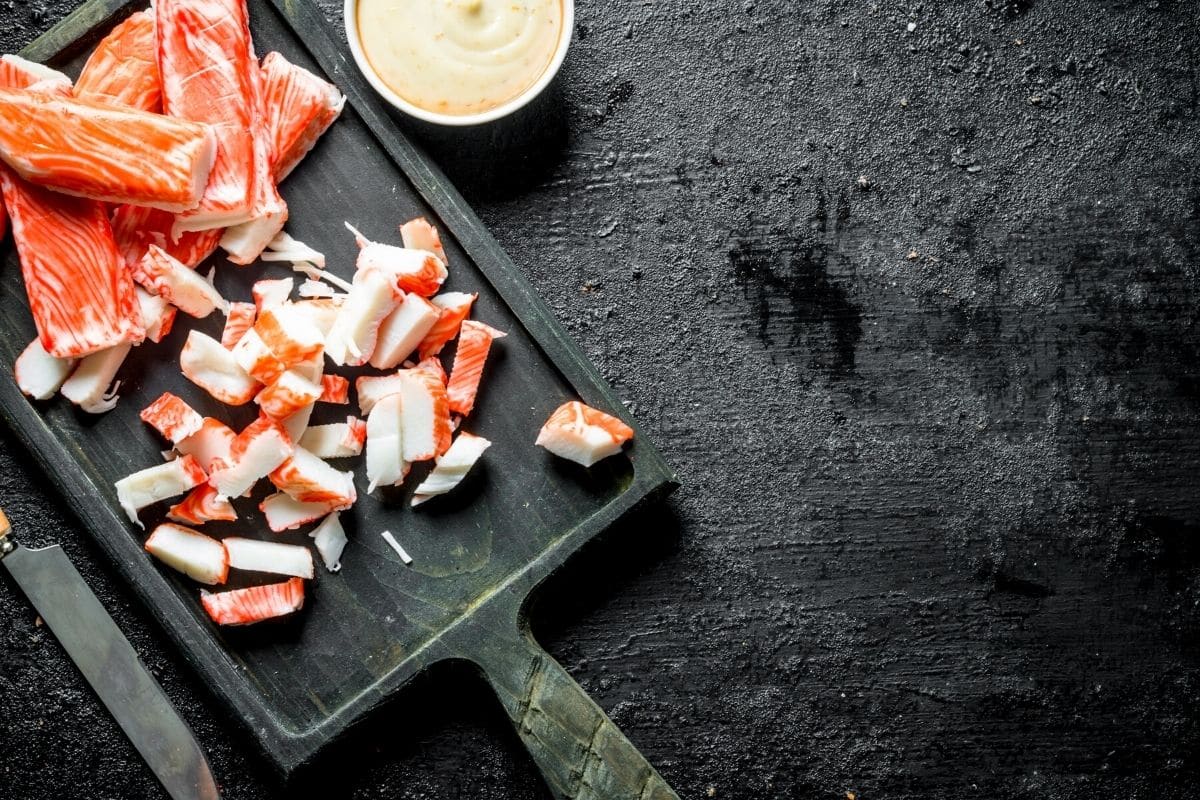If you have eaten at a sushi restaurant, chances are you have seen California Rolls with imitation crab. This artificial crab is cheaper than real crab, making it attractive for restaurants. Is imitation crab gluten free?.
Since so many people like sushi, this is important to know if you have celiac disease or are sensitive to gluten.
Imitation crab, also known as surimi, is a popular ingredient found in many dishes like California rolls, crab rangoon, seafood salads, and more This type of crab meat is made from fish that has been pulverized and combined with starch, egg whites, flavorings, and other binders to form a paste which is then shaped into sticks or shreds to resemble real crab meat
But is this ubiquitous sushi staple actually gluten-free and safe for people with celiac disease or gluten sensitivity to eat? Let’s take a closer look
The Problem With Most Imitation Crab
Here’s the unfortunate truth – the vast majority of imitation crab contains wheat-based ingredients like flour or starch This means it is not gluten-free
Many brands use textured vegetable protein (TVP) derived from wheat to help bind and add a meaty texture to their surimi. Maltodextrin derived from wheat is also commonly used.
So why does so much imitation crab contain gluten? Mainly because wheat-derived additives like flour are inexpensive binders and fillers. Using gluten helps keep costs down for manufacturers. It also allows the surimi to hold its shape better for forming those signature sticks.
Some brands even contain outright wheat flour as an ingredient. So wheat lurks everywhere in conventional imitation crab, making it a no-go for those with celiac disease or NCGS.
Always check the ingredients list carefully when buying imitation crab. Look for words like flour, starch, TVP, hydrolyzed wheat protein, and maltodextrin. If you see any of these, put the package back on the shelf.
The Safest Bet is to Avoid It
Given how prevalent gluten-containing ingredients are in most imitation crab, the safest approach for celiacs and anyone gluten-free is simply to avoid it entirely. After all, why risk gluten exposure from a processed seafood product?
There are plenty of delicious gluten-free recipes for making your own crab cakes, sushi rolls, seafood dip, and more using real crab meat or safe substitutes like hearts of palm. Going DIY let’s you control exactly what goes into your crab creations.
So if you want to be 100% sure something is gluten-free, making it yourself is wise.
A Few Gluten-Free Brands Exist
Now, if you don’t want to give up your beloved California rolls, all hope is not lost. There are a handful of imitation crab brands that produce gluten-free varieties:
Trans-Ocean – This is currently the only brand with certification gluten-free imitation crab. They make their products in a dedicated gluten-free facility. Just look for their gluten-free logo.
Kanimi – This brand of imitation crab does not contain gluten ingredients. However, it’s not made in a gluten-free facility.
Dyna Sea – Some varieties are marked gluten-free on the label, but not certified. Check carefully.
As always, diligently read the ingredients and double check for any sign of wheat-based additives. Manufacturing can change, so never assume even “safe” brands are gluten-free. Confirm each time you buy.
And know that cross-contamination is still a risk with these products not made in a certified gluten-free facility. The decision is yours on whether that low-level chance is worth it to enjoy your favorite sushi roll.
What About Real Crab?
You may be wondering in the midst of all this imitation crab discussion – what about real crab meat? Is that naturally gluten-free?
The good news is yes, crab meat like you’d pick from a freshly steamed Dungeness or King crab is inherently gluten-free. There are no gluten grains lurking within true crab.
However, read ingredients carefully on packaged crab meat which has been pre-picked and processed. Certain seasonings or additives may introduce gluten, albeit rarely.
Your safest bet is choosing plain crab meat and seasoning it yourself. Then you know it’s 100% gluten-free.
How to Order Imitation Crab at Restaurants
Clearly, imitation crab ingredients can be tricky to navigate. But what do you do when eating out and want to enjoy sushi or other dishes containing this pseudo seafood?
Here are some tips for ordering wisely at restaurants:
-
Ask specifically if they use gluten-free imitation crab. Most will not.
-
Request they make your roll with real crab meat instead of imitation. There may be an upcharge.
-
For dishes like seafood salad or crab rangoon, ask if they can substitute real crab or omit the imitation crab altogether.
-
Be aware of cross-contact if the restaurant uses mostly non-gluten-free imitation crab.
-
Be wary of unlabeled imitation crab meat at self-serve bars like salad stations.
The safest route is choosing another gluten-free menu item sans imitation crab. But with care, you may be able to enjoy your favorite crab-based foods after all.
The Takeaway on Imitation Crab & Gluten
While it takes some detective work, those who need or really love imitation crab can often find or create gluten-free options. But for many, simply avoiding this highly processed product altogether may be the wisest course. When it comes to gluten and fake crab, discretion is advised. Carefully check labels and ingredients lists, read between the lines, and your crab sushi and other recipes can stay in your gluten-free diet.

Answer: Is Imitation Crab Gluten Free?
No, imitation crab is NOT gluten free. It is filled with gluten ingredients, including wheat. See below for a list of gluten free imitation crab brands. A few brands make gluten-free imitation crab, but not many. With all of its added ingredients, imitation crab is a bit like junk food. Many joke crab sticks are about as good as a hot dog.
Imitation crab is full of gums, coloring, and preservatives. It also often includes MSG, which many can not eat without a reaction.
This Is Sushi Gluten Free article can learn more about gluten and sushi.

What Is Imitation Crab?
Imitation crab is crab made with non-crab ingredients. Imitation crab is used frequently at sushi restaurants because it is less expensive than real crab meat.
There is something a little strange about crab sticks made from white fish that has been ground up into a paste. This paste combines binding agents like egg wheat and other ingredients to form it into sticks.
White fish meat, like wild Alaska pollock, modified food starch, vegetable oil, and egg whites are common things that are used to make fake crab. These are mashed into a fish paste and then molded in stick form. These fish products also have artificial crab flavorings like monosodium glutamate (msg). It is filled with common additives and occasionally wheat flour or malt vinegar.
You can taste the difference between real fresh crab and imitation. I always opt for the real thing when I can. There is real crab meat available at some restaurants, but it costs more than fake crab meat.
You can often tell the crab is artificial by the name on the package. Krab is often spelled with a K instead of a C. Imitation crab is also uniform in size and shape, making all crab sticks identical. Real crab has color and size variations.
Imitation crab is used in crab cakes, sushi, seafood salads, crab rolls, crab rangoon, etc. Read Is Fish Sauce Gluten Free before you make the crab with any other Asian sauces.
Before you buy imitation crab, you should always read the label to make sure it is gluten-free. If you are new to gluten free living, this gluten-free guide will help you get started!.
Best Ever Gluten Free Crab Cakes | using jumbo lump crab meat with hardly any fillers
FAQ
Can celiacs eat imitation crab?
Does imitation meat have gluten?
Are California rolls gluten free?
Why is crab not gluten free?
Is imitation crab meat gluten-free?
Almost all imitation crab meat that’s out there contains wheat, which means it is not gluten-free. Trans-Ocean makes a specific imitation crab meat that does not use gluten ingredients, and the company makes their products in a dedicated gluten-free facility. Please read the ingredient and nutrition label carefully.
Is Transocean imitation crab gluten-free?
However, TransOcean Imitation Crab is certified gluten-free. For other brands, always be sure to review the ingredients list. If you are looking for a gluten-free alternative, consider Premium Jumbo Lump Wild Crabmeat, Wellsley Farms Hearts of Palm, and Good Catch Plant-Based New England Style Crab Cakes.
Is crab meat gluten-free?
Crab meat is naturally gluten-free! Imitation crab is typically made using a base of cooked pollock fish, making it a no-brainer as the perfect substitute! Real pollock is a healthier alternative because it’s jam-packed with protein, vitamin B12, and selenium which are all important nutrients. Pollock is gluten-free!
Does imitation crab contain real crab meat?
Generally, imitation crab contains no actual crab meat. It does, however, sometimes contain a small piece of crab extract to add crab flavor. Real crab has a far higher nutritional value than imitation crab. Real crab meat gets the majority of its calories from protein.
